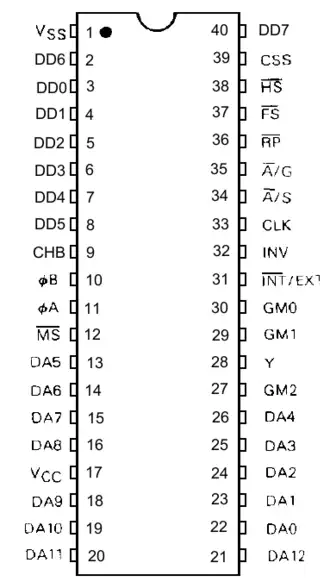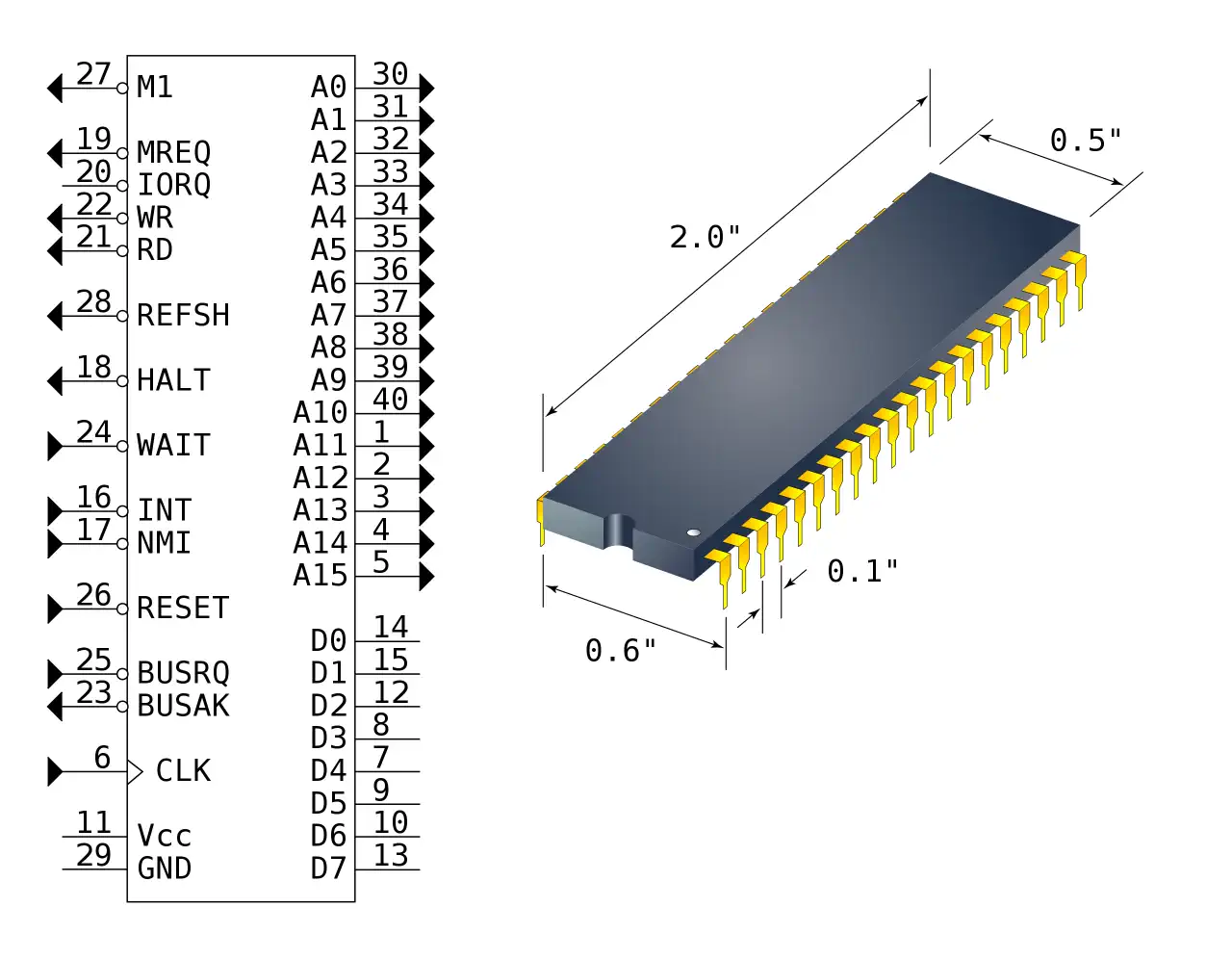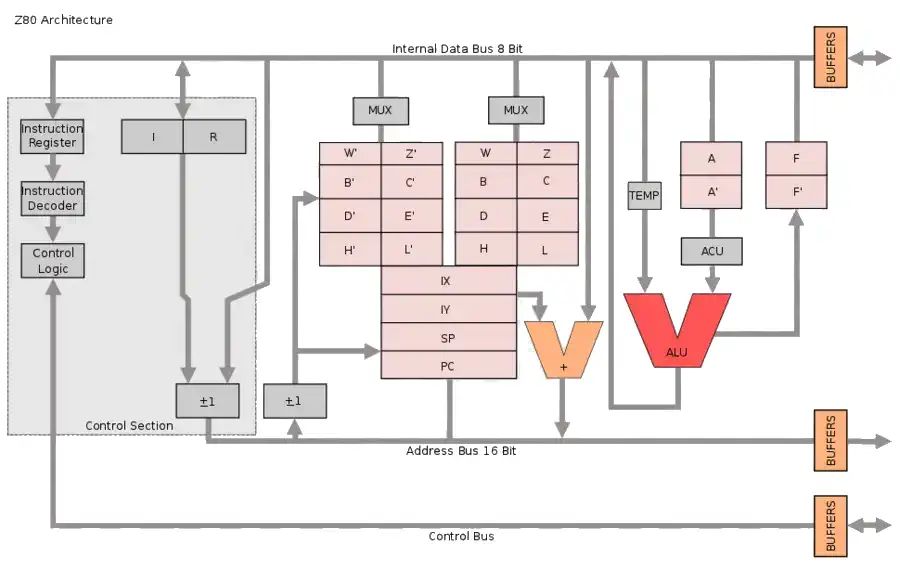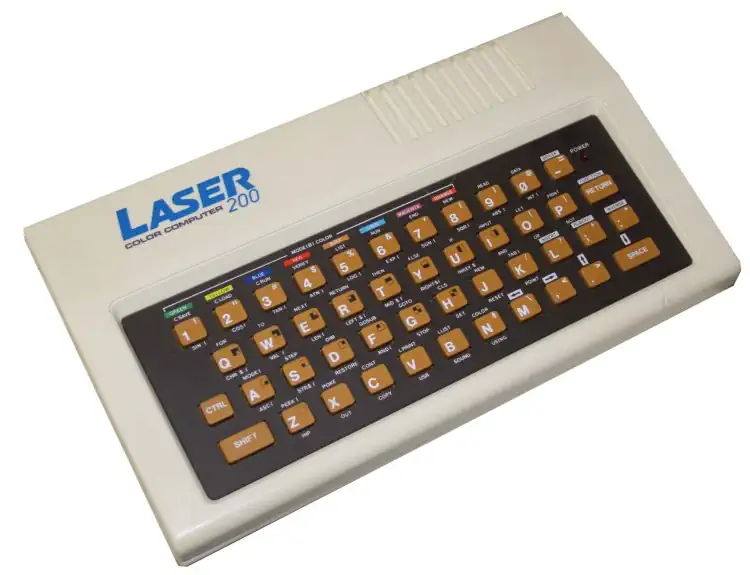VTech Laser 200
The VTech Laser 200 is an 8-bit home computer released in 1983 by Video Technology or VTech. The computer is also sold as the Salora Fellow in Finland, the Seltron 200 in Hungary and Italy, the Smart-Alec Jr. in the USA, the Texet TX8000A in the UK, the Dick Smith VZ 200 in Australia and New Zealand, and the VTech VZ 200 in the USA and Canada.
When the VZ200 was released in the USA, it quickly had competition from the Timex TS1000, which sold for only $30. In other countries, where Timex did not have a strong foothold, the VZ200 did better. The most popular was the version sold in Australia and New Zealand. In those countries, the computer was bought primarily by people to learn how to program in BASIC. The BASIC was more capable than the Commodore 64 basic, even though that machine was overall more powerful. In the UK the machine fared poorly against the ZX Spectrum, even though it sold for less than the spectrum, the VZ200 had little impact on the market.
The VZ200 internally contains three circuit boards, one for the power supply, one for the video circuit, and then the main board. The architecture is similar to the Tandy TRS-80, but due to different memory mapping, the software is incompatible, and only simple TRS-80 BASIC programs can be run without problems.
The VZ200 uses a NEC version of the Z80 and was released initially with only 4kB of memory. Within a few weeks of its release this was increased to 8kByte to make the machine more attractive. A 16kByte expansion unit was available, so that the computer could have a total of 24kByte of RAM available to it. For the hobbyist with some soldering skills, the video RAM could be expanded as well, since there were video RAM chip select lines available on the memory expansion unit.
Laser Video Capabilities
For its video capabilities, The VZ200 uses the Motorola 6847 Video Processor, which has a maximum resolution of 256x192 pixels made up from 8x8 pixel character blocks. With the installed 2kByte of VRAM, the bitmapped mode was unavailable, and the text mode could provide a semi-resolution of only 256x128 pixels. The VZ200 has 256 predefined character blocks and a total of nine colors, consisting of eight colors plus black. The character blocks are stored in ROM and cannot be redefined.
Text MODE 0
In mode 0, the background color can be dark green or orange, with black text. The first 128-character blocks are 64 alpha-numeric characters and their inverse. Mode 0 is the only mode in which black is available. The second 128-character blocks consist of 2x2 pixel blocks in various combinations for every of the 8 colors available. This made crude semi-graphics possible.Text MODE 1
In mode 1, two color schemes are used with each background.- Color Scheme 1 background: light green, foreground: light green, yellow, blue or red.
- Color Scheme 2 background: white, foreground: white, cyan, magenta or orange.
Graphics Mode
The graphics mode has 128×64 semi-pixels. For each character block, the background color can be white or light green and the foreground color can be any in the chosen color scheme, only one color set can be used at a time, so only four colors can be displayed simultanously. Some clever users figured out that with precise video timing using assembly code, it is possible to split the display to show all eight colors on the screen, you can find these techniques shown in the VZ200 Five Finger Punch demo '2018AD' and Bushy555's demo '8 colors'.Motorola MC6847 Video Display Generator
The MC6847 is a video display generator (VDG) first introduced by Motorola and used in the following machines (this is not a full list):
- TRS-80 Color Computer
- Dragon 32/64
- Laser 200
- TRS-80 MC-10/Matra Alice
- NEC PC-6000 series
- Acorn Atom
- APF Imagination Machine
The VDG is a relatively simple display generator compared to other display chips of the time. It is capable of displaying alphanumeric text, semigraphics and raster graphics contained within a roughly square display matrix 256 pixels wide by 192 lines high.
The ROM includes a 5 x 7 pixel font, compatible with 6-bit ASCII. Effects such as inverse video or colored text (green on dark green; orange on dark orange) are possible.
The MC6847 is capable of displaying nine colors:
- black
- green
- yellow
- blue
- red
- buff (almost-but-not-quite white)
- cyan
- magenta
- and orange

Zilog Z80 CPU Family
The Z80 quickly became popular in the personal computer market, with many early personal computers, such as the TRS-80 and Sinclair ZX80, using the Z80 as their central processing unit (CPU). It was also widely used in home computers, such as the MSX range, SORD, and the Amstrad CPC, as well as in many arcade games. Additionally, it was also used in other applications such as industrial control systems, and embedded systems. The Z80 was widely used until the mid-1980s, when it was gradually replaced by newer microprocessors such as the Intel 80286 and the Motorola 68000.
The Z80 microprocessor was developed by Zilog, a company founded by Federico Faggin in 1974. The Z80 was released in July 1976, as a successor to the Intel 8080. It was designed to be fully compatible with the 8080, but also included new features such as an improved instruction set, more powerful interrupts, and a more sophisticated memory management system.
The Z80 quickly became popular in the personal computer market, with many early personal computers, such as the TRS-80 and Sinclair ZX80, using the Z80 as their central processing unit (CPU). It was also widely used in home computers, such as the MSX range, SORD, and the Amstrad CPC, as well as in many arcade games. Additionally, it was also used in other applications such as industrial control systems, and embedded systems. The Z80 was widely used until the mid-1980s, when it was gradually replaced by newer microprocessors such as the Intel 80286 and the Motorola 68000. The design was licensed to Synertek and Mostek as well as the European SGS.
The Z80s instruction set is binary compatible with the Intel 8080, so that 8080 code such as the CP/M Operating System and Intel's PL/M compiler for the 8080 can run unmodified on the Z80. The Z80 had many enhancements over the 8080 such as 16-bit data movement instructions, block copy and block I/O instructions, single bit addressing of all registers, IX/IY offset registers, better interrupt system and a complete duplicate register file for context switching during an interrupt.
Source: WikiPedia

RAM max: 2kB
ROM: 16kB
VRAM: 24kB Sound Chip none Sound Piezo Speaker Display Chip Motorola 6847 Display 32x16 text, 128x64 graphics in 2 BG and 3 FG colors Best Text 32x16 in 8 colors Best Color 9 Colors (8 + black) Best Graphics 256x128 monochrome Sprites none System OS Microsoft BASIC Storage Optional Cassette, Disk Drive Original Price £98
The MC6847 is a Video Display Generator (VDG) first introduced by Motorola in 1978


